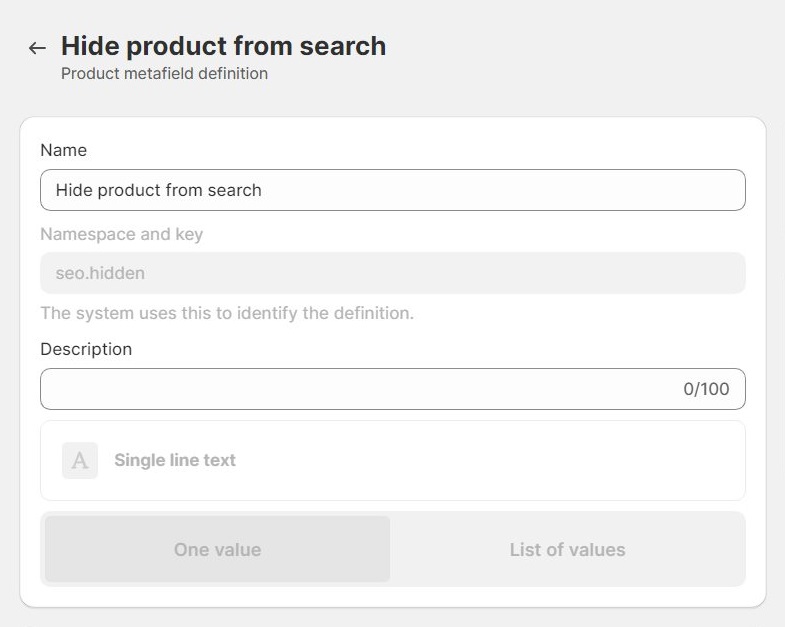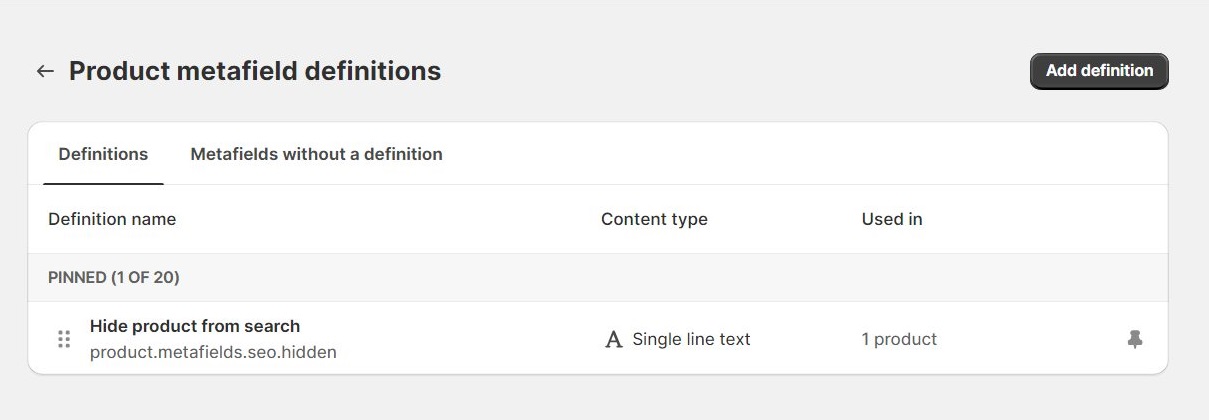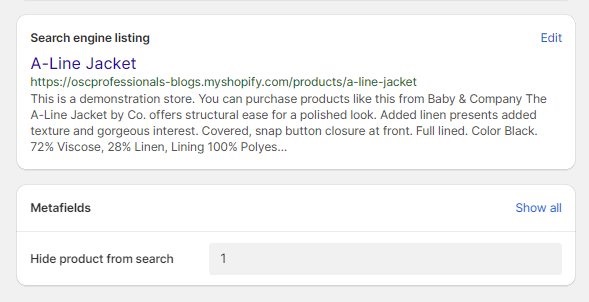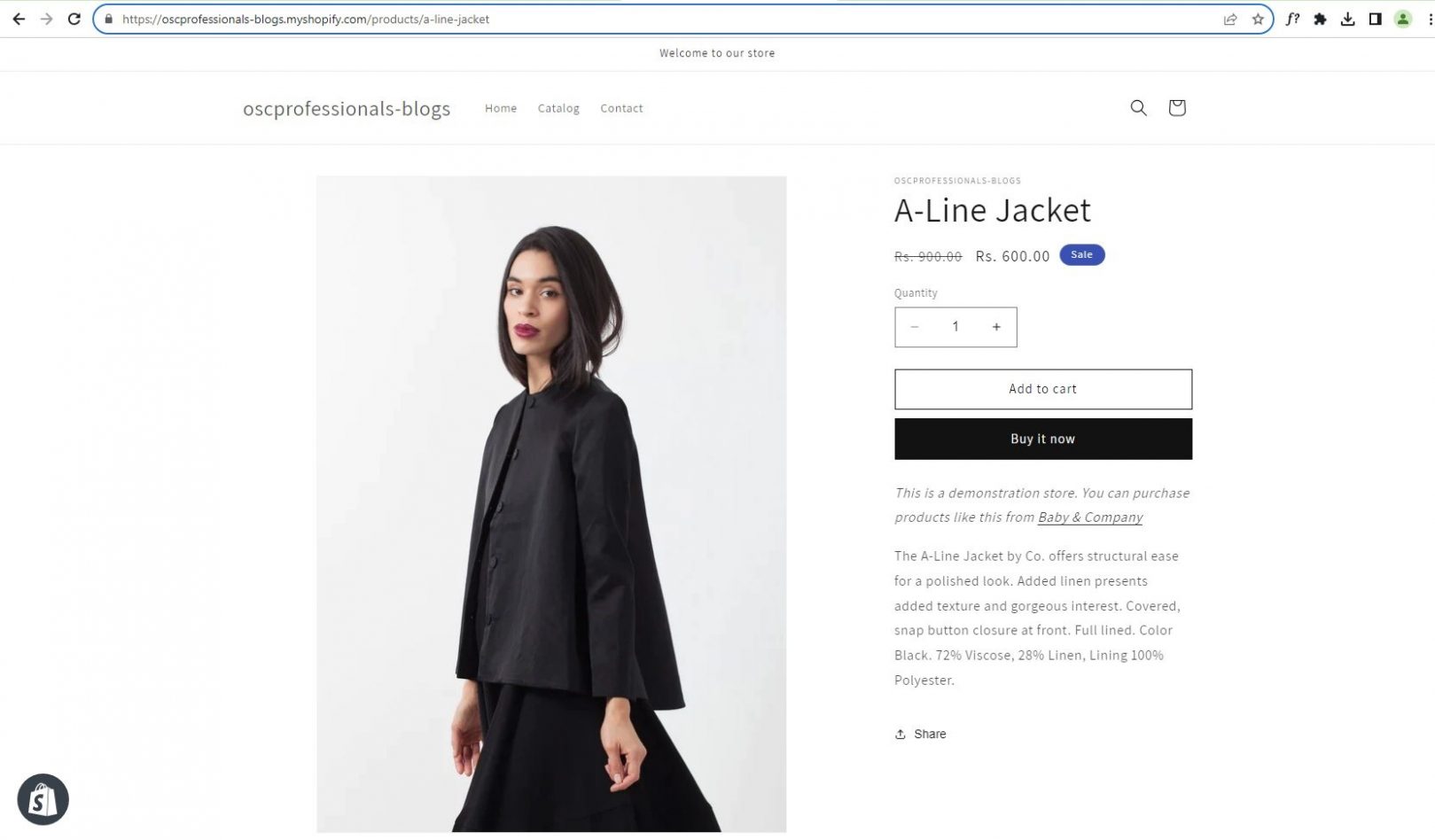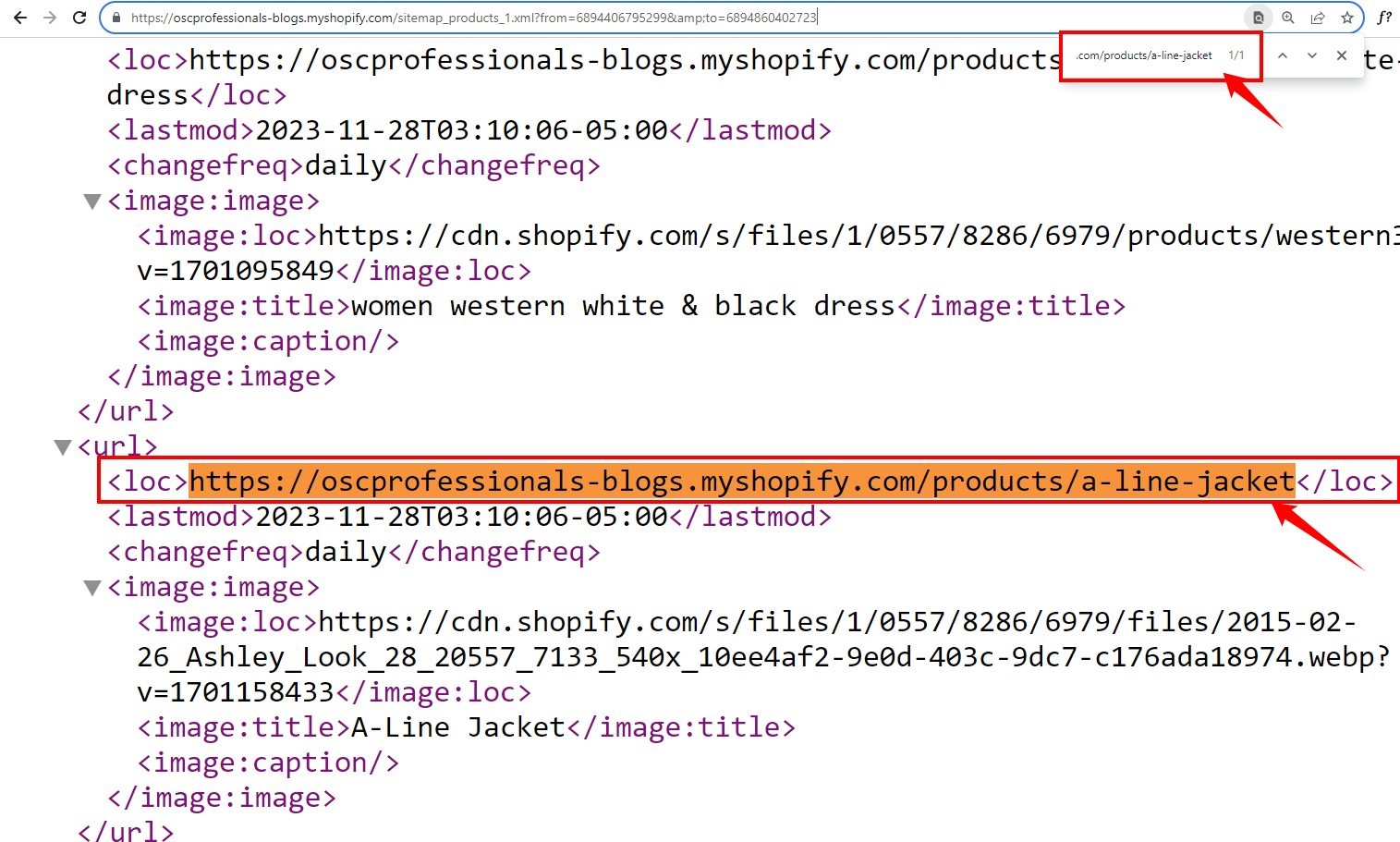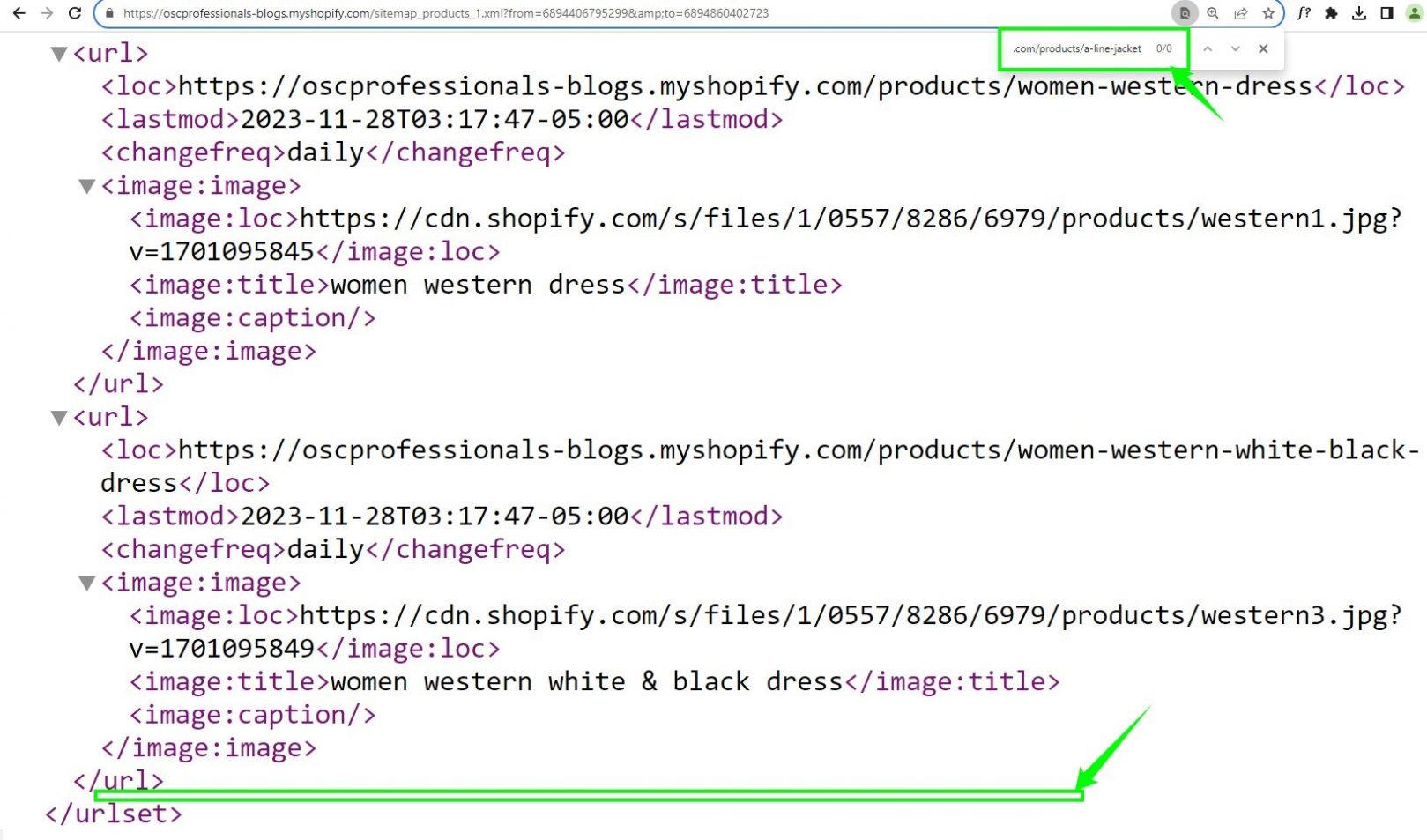How to Hide a Product From Search Results on Shopify?
To hide products on your shopify store is to prevent them from appearing in search results.
By hiding a product from search results, you effectively make it unavailable for customers to find and purchase through your online store’s search function. However, there are a few consequences you should be aware of.
Step1. Go to the shopify store > Create a product meta field > Mention name “Hide product from search“> Under the Namespace and Key section, enter “seo.hidden”.
Step2. Go to the product which you want to hide > Scroll down to Metafields > Hide Product from Sitemap > Set value “1” to hide the product from the search.
- 1 is to hide the product
- 0 display product on sitemap(or blank will also be applicable)
How to Check
- Preview the product URL with sitemap.xml
- Verify that the URL we marked as hidden exists on the site map.
This product will no longer appear in your store search or in search engines like Google. In your store, you can search for the name of this product and it won’t appear.
Before
After
Saving the changes, the product will no longer appear in search results on your Shopify store. However, please note that the product can still be accessed via its direct URL or if it’s linked from other pages on your store.
What are the different approaches to know?
Different Scenarios and Best Practices while Hiding Product
Seasonal Products:
Scenario: You have seasonal products that are only relevant during specific times of the year.
Best Practice: Use the built-in visibility settings to hide these products during the off-season. Additionally, consider utilizing collections to group seasonal items for easy management.
Exclusive or VIP Products:
Scenario: You want to create a sense of exclusivity for certain products available only to VIP customers or during special events.
Best Practice: Use password protection to make these products accessible only to customers with a password. This adds an extra layer of exclusivity and control.
Inventory Management:
Scenario: You have limited stock of certain products and want to hide them when they are out of stock.
Best Practice: Set up automated processes using third-party apps or custom coding to hide products automatically when they go out of stock. This helps manage customer expectations and prevents orders for unavailable items.
Discontinued Products:
Scenario: You no longer carry certain products and want to remove them from the storefront.
Best Practice: Use the built-in visibility settings to hide discontinued products. Clearly communicate the discontinuation on the product page or consider redirecting customers to alternative products.
Beta Testing New Products:
Scenario: You’re beta-testing new products and want to limit access to a select group of customers.
Best Practice: Use password protection or create a hidden collection accessible only to beta testers. This ensures that only the intended audience can view and purchase the beta products.
Customization and Made-to-Order Products:
Scenario: You offer customizable or made-to-order products that need to be hidden until a customer requests them.
Best Practice: Utilize the built-in visibility settings to keep these products hidden until a customer expresses interest or makes a request. This allows for a personalized customer experience.
Rebranding or Website Redesign:
Scenario: You’re undergoing a rebranding process or redesigning your website and want to temporarily hide certain products.
Best Practice: Use visibility settings to hide products during the rebranding or redesign process. Communicate the changes to customers to manage expectations.
Potential Consequences
SEO Impact:
Hiding products can impact your search engine optimization (SEO) efforts. If a product is ranking well in search results and you hide it, you may lose the SEO benefits associated with that product. This could affect your overall website visibility.
User Experience:
If customers are searching for a product that you’ve hidden, they won’t find it. This can lead to a poor user experience, frustration, and potentially lost sales.
App Integration:
If you’re using third-party apps for search functionality or other features, hiding products might not work as expected or could cause conflicts. Check if your apps support the hiding mechanism you’re using.
Product Recommendations:
If you’re using recommendation features on your site, hiding products might affect the accuracy of these recommendations, as the hidden products won’t be considered.
